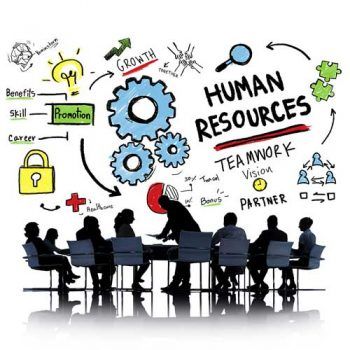
Five Outdated Human Resource Policies That Need To Go, Now!
“Take care of your people and they will take care of your customers”
“Treat your employees the way you would like to be treated – provide them every avenue to success. Get their confidence and respect. Have them like and be interested in their job.”
These Five Outdated Human Resource Policies need to go and need to go now:
1. The Tedious No Reference Policy: For those of you who have been at the receiving end of this extremely frustrating policy, and have no idea why most companies across the globe follow this as a rule, the story goes like this: “Not very long ago, in the United States, an anesthesiologist was dismissed after he was caught using narcotics at work. After firing him, the company gave him a positive reference, but later, at his next job, he came to work doped, which almost cost a patient’s life. The patient’s family, who sued the new employer, was awarded $8-million USD. That company then turned around and sued the anesthesiologist’s former company, which provided the reference, and won”.
Hence, in order to avoid complications arising from references which can later be used against the company, and also to avoid defamation lawsuits (in case the company gives the employee a brutally honest reference the employee disagrees with), companies prefer giving no references at all. This HR policy is not only outdated in today’s world where networking is crucial, it also means that there is absolutely no trust in the employee-employer relationship. While it is only fair for an employee to get a reference from his/her former employer stating his/her potential, it is equally beneficial for the future employer to have knowledge of the same.
2. The Insensitive Bereavement Pay Policy: This particular policy is outright insensitive. Losing someone close to you is difficult enough, without having to fill in bereavement applications categorizing whether the deceased was an immediate family member or a non-family member, based upon which the companies issue paid leaves. It is these occasions that you as an employer, or the person responsible for the well-being of the employees at the organization, have to be extremely sensitive about. And it is precisely these occasions that characterize employee-employer relationships, which have a direct impact on productivity. However, when your employee loses someone dear, put yourself in his/her shoes and think how you would feel if the place you go to work at objectifies it, in a manner so insensitive. Being human will take you a much longer way than being a capitalist in these situations. Life, after all, is not a balance sheet. Take care of your employees and they will take care of your business.
3. The School-like Attendance Policy: We thought we left school eons ago, however, we were so wrong. Old school attendance policies haunt us to this day, even at work, where we thought we would be treated as responsible adults. Not allowing work from remote location as a rule and clocking arrival and departure time (which then goes on to affect the pay) stringently indicate a deep-rooted lack of trust and only result in demotivating the employees. How about moving from time-based management to goal-based management ?
4. The Draconian Bell Curve Performance Reviews Policy: One wonders if this is a particularly Indian phenomenon. As Indian kids, we were constantly compared to the metaphorical (and sometimes literal) “Sharmaji ka beta” (the neighbour’s son for our international readers). So we get a job and are finally ready to taste freedom, only to realize, “Sharmaji ka beta” has followed us to our workplace too! Bell curve performance reviews segregate employees according to their performances (high, average and low) by a comparison between the employees, and are completely based on the discretion of the manager. The ones ending up at the bottom of the curve end up being fired to accommodate fresh recruits to make up for the lost performance. This may not only result in unfair evaluation but also in high attrition rates thus having a direct negative impact on the goodwill of the company. Moreover, this format of a performance review makes for an extremely competitive and pressured environment, which any good manager knows, are huge road blocks for productivity. It is imperative to avoid such a divide and conquer strategy in the workplace. On the brighter side, Infosys having made a change, hopefully more Indian companies will follow in scrapping this draconian policy!
5. The Regressive Dress Code Policy: Once again, let’s just try not to keep reinforcing what we all went through at school. Yes, of course there should be some kind of dress code or at least some definition of clothing which may be considered offensive by others, hence to be avoided. However, micromanaging what your employees can and cannot wear is twisting and bending their identities out of shape in a lot of ways. For example, the still ongoing debate on Muslim women wearing head scarfs in France. Let your employees be, let them breathe easy. How one dresses is how one feels, how one feels is how one creates, and every individual has the right to decide that for oneself.
It is indeed sad that in a world as globalized as the one we currently inhabit, we still need to negotiate, on a daily basis, these outdated policies which regulate and control our every day at work. In the longer run, a business which is sustainable and scalable is one which provides an environment to nurture and respect its employees. Like we said earlier, all you need to do is, take care of your employees and they will take care of your business! It has been so long since we have been ‘profit’ oriented, let’s strive for a change to be more ‘people’ oriented. Trust us (and some of the world’s best business leaders) – the profits will soon follow.




